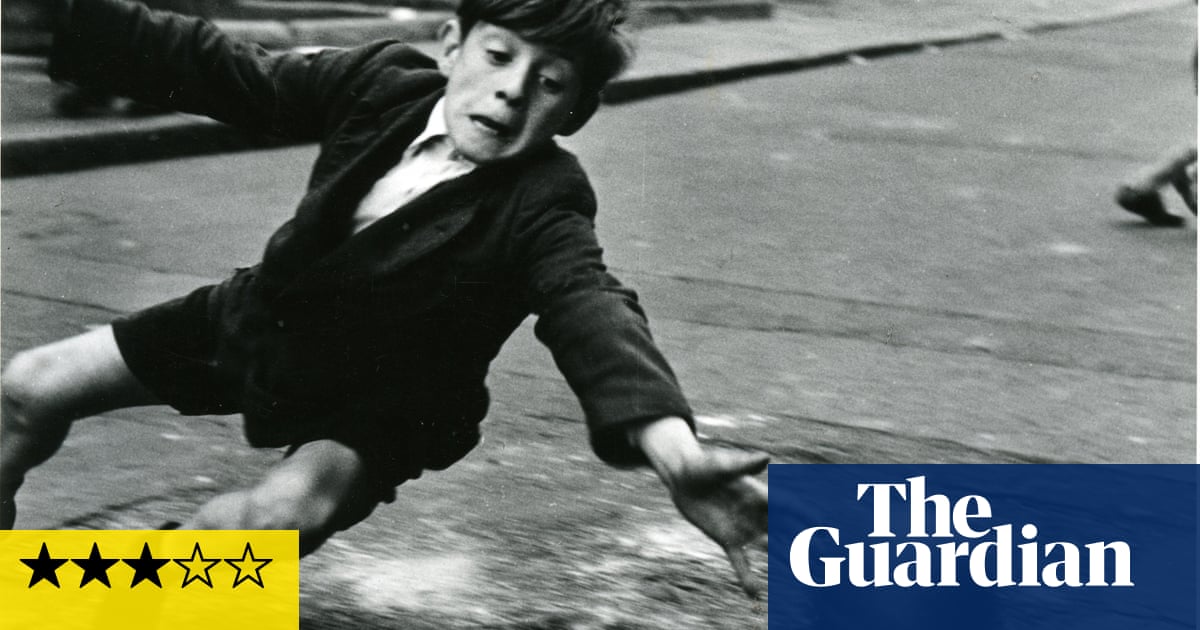IIn its 92-year history, the Courtauld Gallery in London has never acquired or exhibited photography – until now. His inaugural exhibition is Roger Mayne: Youthdedicated to around 60 works by the self-taught British photographer, best known for his documents of working-class children on the poor and battered streets of post-war London.
When trying to open programs to new audiences, photography is a natural step for any institution that has previously ignored the medium. Mayne seems a safe choice for a gallery best known for its collection of Impressionist and Post-Impressionist paintings, which the general public might not mind. They could compare Maine’s overcrowded group pictures with the busy Impressionist scenes of people at leisure. Even the ideas of the Impressionists somewhat inform Main’s approach to documentary photography – the idea that there is a difference between what is in front of you and what you see.
As well as helping to shape the visual identity of post-war Britain, Maine’s photographs of the country’s youth on impoverished streets emerged at a time when children’s rights were hotly debated and progressive theories of Donald Winnicott and John Bowlby shaped British policy on children and families. A photograph of Maine appeared on the covers of many child psychology and sociology publications, including the paperback cover of Bowlby’s Attachment and Loss Vol 1.
He was also all over the British press: the image of the goalkeeper, included in this exhibition, appeared on the front page of the Observer on 24 August 1956. In the dramatic picture, a young footballer, dressed in a thick jacket, T-shirt and shorts, lunges for a ball in the street; Maine captures the moment just before the two presumably hit the pavement hard. The photograph reflects a duality ever-present in Main’s work – the harsh reality of the circumstances perceived by the adult viewer, and the playful innocence of the child in front of it. This is underpinned by a certain longing—a longing for the childhood Maine himself never had, growing up in a harsh, strict family environment.
Youth features mostly ambitious, large-scale prints made by Main himself – the only traces of his chemistry degree – that reveal his desire to turn his images into art at a time when photography was not widely considered an art form. Maine also sought to embed himself in the communities he photographed—a different approach to the cohort of photographers of the time. His most famous photographs, for example, were taken on Southam Street in the west of the city London between 1956 and 1961. The street was largely demolished to make way for Trellick Tower in the 1960s. In 1956 it was practically uninhabited, but as Maine saw it, it was vibrating with life.
Maine’s images show then-baby boomers turning the uncertainty and desolation of their surroundings into a playground. children crowding porticoes and posing in the bombed-out windows of a building. “Take our picture, sir!” they apparently yelled at Maine as he walked around with his Rolleiflex. In other large-scale prints, a baby is balanced on a bicycle and a young boy’s face expresses pure ecstasy as he races down a fishing line into a crudely constructed early-era adventure playground – part of a movement to transform junkyards and bomb sites into places to play . Mayne’s photographs of children in Kensal Town or Notting Hill demonstrate how intuitively and creatively children do this.
The second half of this two-room exhibition casts Mein’s photography in an entirely different light. A set of photographs he took of artist Nigel Henderson and his family, and a small collection of photographs of Maine’s own children and grandchildren, explore the role of family from within. They are rare glimpses of domesticity through the lens of a male photographer understanding his position as a father and caregiver in his own family. There is a self-portrait of the photographer holding his daughter; a close-up of his daughter breastfeeding; his infant son in a pram in Trafalgar Square. In 1991, his daughter is holding her daughter, eating spaghetti with one hand. These images reveal Maine’s willingness to be vulnerable, to challenge conventional notions of family dynamics. So far they have not been paid attention to. I only wish there were more of them.
The exhibition culminates in Mayne’s later photographs of dapper youths and teenagers bouncing and bending at fairs and festivals. They are filled with the irresistible optimism, joy and freedom of young people. Although everything has fallen apart and will fall apart again.
